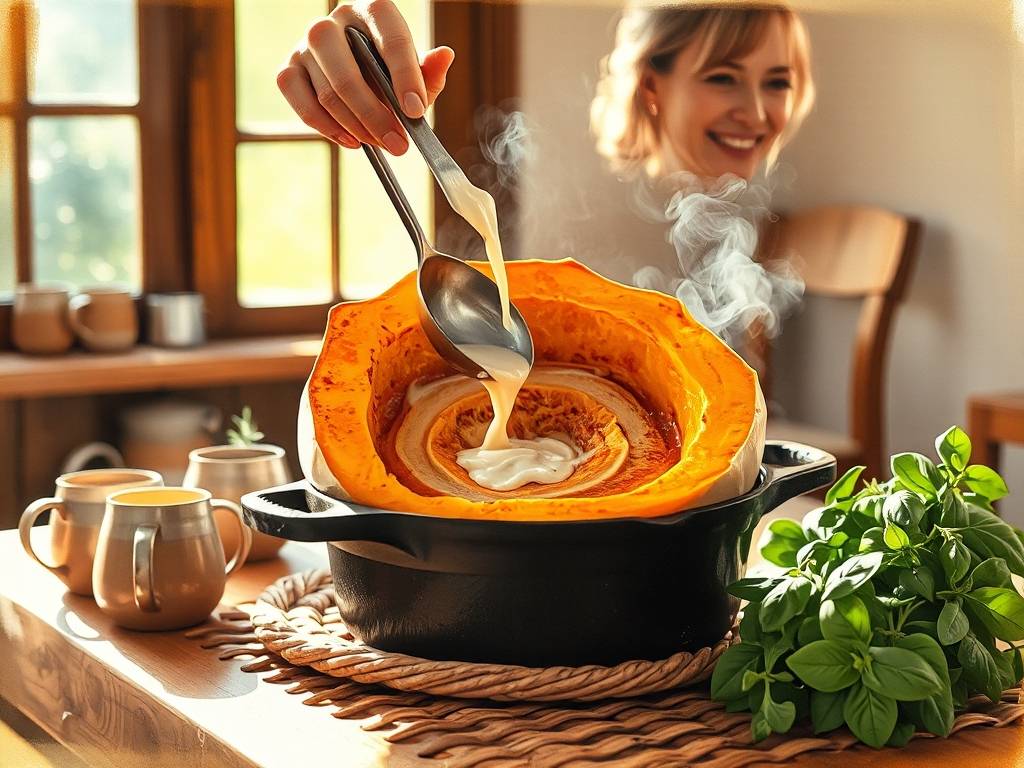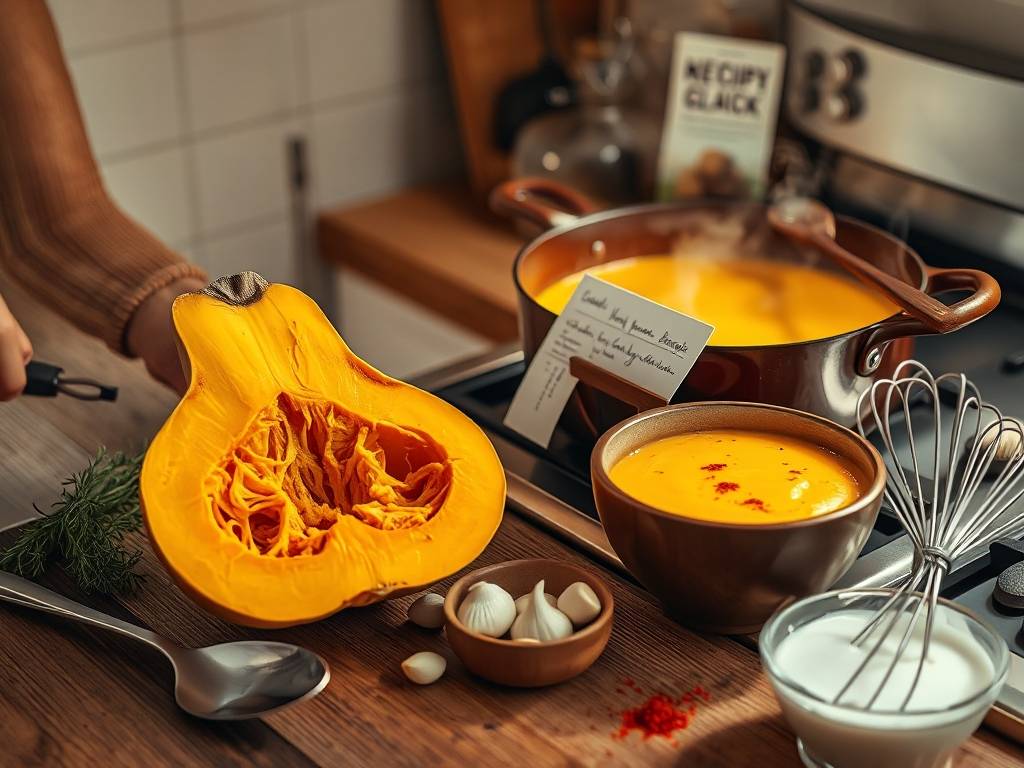The Ultimate Guide to Crafting Creamy Butternut Squash Soup: Roasting and Blending Techniques
There is something undeniably comforting about a warm bowl of butternut squash soup. Its velvety texture, sweet and savory notes, and vibrant orange hue make it a beloved dish for autumn and winter gatherings. While there are countless variations of this classic soup, the method of roasting the squash before blending it with cream yields an exceptionally rich and deep flavor profile that simply cannot be achieved through boiling or steaming alone. In this comprehensive guide, we will walk through every step of creating the perfect roasted butternut squash soup, from selecting your ingredients to mastering the blending process.
Why Roasting Makes All the Difference
Many recipes call for boiling or steaming butternut squash, but roasting unlocks a completely different dimension of flavor. When exposed to high heat in the oven, the natural sugars in the squash caramelize, creating a deeper, sweeter, and more complex taste. This Maillard reaction—the same chemical process that browns meat and toast—transforms the humble squash into something extraordinary. Additionally, roasting concentrates the squash's flavor by evaporating excess water, resulting in a more intense taste that forms the foundation of your soup.
The roasting process also allows you to incorporate other flavors directly into the squash. By tossing the squash with olive oil, salt, pepper, and perhaps some aromatic herbs before roasting, you infuse it with seasoning that penetrates throughout the flesh. This creates layers of flavor that will carry through to the final product, making your soup anything but one-dimensional.

Selecting and Preparing Your Ingredients
The quality of your ingredients directly impacts the quality of your soup. For the best results, choose a butternut squash that feels heavy for its size with a firm, unblemished skin. The stem should be intact, and the squash should have a consistent beige color without soft spots.
You'll need:
- 1 large butternut squash (about 3-4 pounds)
- 2 tablespoons olive oil
- 1 large onion, chopped
- 3 cloves garlic, minced
- 4 cups vegetable or chicken stock
- 1 cup heavy cream
- 1 teaspoon fresh thyme leaves
- ½ teaspoon ground nutmeg
- Salt and freshly ground black pepper to taste
- Optional garnishes: toasted pumpkin seeds, crème fraîche, or fresh herbs
Begin by preheating your oven to 400°F (200°C). Carefully cut the squash in half lengthwise and scoop out the seeds and stringy pulp. Brush the cut surfaces with olive oil and season generously with salt and pepper. Place the halves cut-side down on a baking sheet lined with parchment paper. Roast for approximately 45-60 minutes, or until the flesh is tender when pierced with a fork.
The Roasting Process: Techniques for Perfection
While the basic concept of roasting squash is straightforward, a few techniques can elevate your results. First, ensure your oven is fully preheated before placing the squash inside. An properly heated oven ensures immediate caramelization rather than steaming.
Consider adding additional vegetables to roast alongside your squash. Onions, carrots, or even apples can be roasted simultaneously, adding complexity to your soup's flavor base. If including these, chop them into similar-sized pieces to ensure even cooking.
For an extra layer of flavor, try rubbing the cut surfaces of the squash with a mixture of oil and spices before roasting. Smoked paprika, cumin, or curry powder can add interesting dimensions to your final soup. Alternatively, you can place a few sprigs of fresh herbs like sage or rosemary on the baking sheet to perfume the squash as it roasts.
The squash is ready when the flesh is completely soft and the edges have developed a beautiful golden-brown color. Allow it to cool slightly before handling—the steam trapped inside can be very hot. Once cool enough to touch, use a spoon to scoop the flesh from the skin. The roasted squash should separate easily from the skin, revealing its beautifully caramelized interior.
Building Flavor: The Sauté Step
While your squash is roasting, take the opportunity to build additional flavor layers. In a large pot or Dutch oven, heat a tablespoon of olive oil over medium heat. Add the chopped onion and cook until translucent and slightly golden, about 5-7 minutes. Add the minced garlic and cook for another minute until fragrant.

This simple sauté step is crucial for developing the soup's aromatic base. The onions sweeten as they cook, complementing the natural sweetness of the roasted squash. The garlic adds its characteristic pungency, which will mellow beautifully during the simmering process.
For those who enjoy a hint of spice, consider adding a pinch of red pepper flakes at this stage. The subtle heat will balance the sweetness of the squash without overpowering it. If you prefer an earthy note, a teaspoon of fresh thyme or sage added to the onions will infuse the oil with herbal notes that will carry through the entire soup.
The Blending Process: Achieving Perfect Texture
Once your roasted squash is prepared and your aromatics are cooked, it's time to combine everything. Add the scooped squash flesh to the pot with the onions and garlic. Pour in your stock, using a wooden spoon to break up any large pieces of squash. Bring the mixture to a simmer and cook for 15-20 minutes to allow the flavors to meld together.
Now comes the crucial step: blending. For the silkiest texture, use an immersion blender directly in the pot. Blend until completely smooth, moving the blender around to incorporate all ingredients evenly. If you don't have an immersion blender, carefully transfer the soup in batches to a stand blender. Be cautious when blending hot liquids—fill the blender no more than halfway and hold the lid firmly in place with a kitchen towel.
The blending stage is where your soup transforms from a chunky mixture into a velvety smooth delight. Take your time with this process, ensuring there are no lumps remaining. If the soup seems too thick, you can add more stock until it reaches your desired consistency.
Incorporating the Cream: A Delicate Balance
Once your soup base is perfectly smooth, it's time to add the cream. Reduce the heat to low and stir in the heavy cream. Be careful not to boil the soup after adding the cream, as high heat can cause it to curdle. Warm the soup gently until it's heated through.
The cream not only adds richness but also helps balance the natural sweetness of the squash. For a lighter version, you could substitute half-and-half or whole milk, though the soup will be less luxurious. Vegan alternatives like coconut milk also work beautifully, adding a subtle tropical note that complements the squash wonderfully.
Season your soup with ground nutmeg, which traditionally pairs beautifully with winter squash. Add salt and pepper to taste, remembering that the roasting process may have concentrated the saltiness, so taste before adding more. A squeeze of fresh lemon juice can brighten the flavors and cut through the richness if desired.
Serving Suggestions and Garnishes
Butternut squash soup is delicious on its own, but the right garnishes can transform it into a restaurant-quality dish. Consider topping each bowl with a drizzle of high-quality olive oil, a spoonful of crème fraîche, or a sprinkle of toasted pumpkin seeds for contrasting texture.
For herby notes, fresh chopped chives, parsley, or thyme make beautiful garnishes. If you enjoy contrasting flavors, try a sprinkle of crispy bacon or pancetta crumbs. For a sweet twist, a drizzle of maple syrup or honey can enhance the natural sweetness of the squash.
Serve your soup with crusty bread for dipping, or for an elegant presentation, consider serving it in hollowed-out small pumpkins or acorn squash bowls. The soup pairs wonderfully with a crisp white wine or hard cider, making it perfect for dinner parties or holiday gatherings.
Storage and Reheating Tips
This soup stores beautifully, making it an excellent make-ahead option for busy weeks. Allow the soup to cool completely before transferring it to airtight containers. It will keep in the refrigerator for up to 5 days or in the freezer for up to 3 months.
When reheating, do so gently over medium-low heat, stirring occasionally. If the soup has thickened in storage, you can thin it with additional stock or cream. Frozen soup should be thawed in the refrigerator overnight before reheating.
Creative Variations to Explore
Once you've mastered the basic technique, consider experimenting with variations. Add a tablespoon of curry powder for a Indian-inspired version, or stir in some apple cider for a fruity twist. For a heartier soup, add cooked wild rice or lentils after blending.
Roasted garlic can replace fresh garlic for a mellower flavor—simply roast a whole head of garlic alongside the squash and squeeze out the softened cloves into the soup. For cheese lovers, a handful of grated Parmesan or Gruyère stirred in at the end adds wonderful savoriness.
The method of roasting butternut squash before transforming it into soup represents the beautiful alchemy of cooking—where simple ingredients, when treated with care and technique, become something greater than the sum of their parts. The deep, caramelized flavors achieved through roasting, combined with the luxurious texture from careful blending and cream incorporation, create a soup that comforts and impresses in equal measure. Whether served as a starter for a formal dinner or as a simple weeknight meal, this roasted butternut squash soup is sure to become a cherished recipe in your culinary repertoire.






发表评论